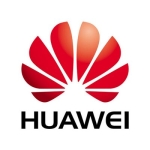What is our primary use case?
We mostly use Dell PowerStore to replace people's outdated technology. Most of the time, if it is Compellent, we use it for that. It easily outpaces Nimble, even though HPE changed its name.
We are using PowerStore 500T and PowerStore 1200T. We have multiple appliances. We have clients that have five and six now, but they are not clustering them.
How has it helped my organization?
We recommended Dell PowerStore to one of our clients. They have since standardized on Dell PowerStore. They are setting up a data center and chose Dell PowerStore 5200T to meet their needs. Their deployed ones were all 1200s or 1000s, and now, they are going with much bigger ones for the data center. They like having one interface and one vendor. It has been extremely good.
Overall, it is fairly straightforward. They have standardized the platform for many of their solutions because it makes it much easier to sell and support since PowerFlex and PowerStore have the same footprint. They just put a different OS on them. The standardization makes it very handy. They can hopefully drive the prices lower, but we do not see them having any competition right now.
The management is easy. Intelligence is built into it. Most of the people just set it and forget it. It takes care of itself. It adjusts itself. I am not saying that you should set it and forget it. You should be checking it once in a while, but most of our clients do not. They just set it, and if something goes drastic, such as running out of disk space, they call us, but it warns you early enough. They get a warning, and then it is just trying to get dry fast enough depending on what they are doing.
Compression has improved, which is one of the enhancements that came with an update, which is great. Dell now claims 5:1, which I do not believe, but it used to be 4:1. The compression is really good and extremely important because you do not have to buy too much, and you can grow it when you need to. Compression is probably the key feature that allows us to slay the competition. I am not aware of the competition having as aggressive compression.
PowerStore improves operational efficiency. Having the NVMe drives is much faster than having SSD drives. We are in a new world there, and the compression is inline, which is awesome. It is just a sweet ride.
We utilize PowerStore’s built-in integrations for VMware and Kubernetes or Containers. VMware integration is very important.
What is most valuable?
Updates come with enhancements. Each time we do an update, there is an enhancement, like new features, which is extraordinary. Other companies would try to charge for all that, but the enhancements just come with it.
What needs improvement?
The maintenance is a bit expensive. The service and support are there for three years, but after the third year, it is pretty pricey for renewal. I hope Dell addresses that. Everything is pricey these days anyway. It is not like the old days of Compellent.
We used to be able to see the metrics for our customers. On Compellent, we could look up that customer and see all the metrics. That is not allowed for us now. We cannot do that anymore. I have to be explicitly allowed by the customer to do that, and some companies' security does not allow that.
For how long have I used the solution?
I have used the solution for at least four, or maybe five, years.
What do I think about the stability of the solution?
The stability has been excellent. We have not had any issues with that. I have had a client that had a fire. It was a pretty bad smoke fire, and PowerStore came through it like a champ. It is still going. However, it needs to be replaced. It is on one processor until the insurance comes through. It is a 500T.
What do I think about the scalability of the solution?
The scalability has been extremely good.
How are customer service and support?
The customer service has been excellent. I would rate them a solid nine out of ten.
How would you rate customer service and support?
Which solution did I use previously and why did I switch?
We have used different solutions. We moved to Dell PowerStore because it is easy.
If you look at the pricing in the field right now, are you going to buy a storage product from HPE that pretty much has a different engineer every week? Also, HPE makes their products in China, which Dell is not doing anymore. They got rid of making products in China. I believe the Dell PowerStore and PowerFlex are produced in the Northeast, so it is a US-based product. The components do not come from China. That is a very strong aspect. With the advent of AI, you need the IO that a PowerStore can give you because things are not getting any less complicated. They require more and more data every day.
How was the initial setup?
The deployment is easy. With the tools that come with PowerStore, you can pretty much migrate from anything.
What about the implementation team?
We are deployment-certified, and we can have everything done within two days. However, we are not Dell. We got ourselves deployment-certified because we wanted to save money on the deal, and we did not want to get sucked into the vortex of the deployment process because there is so much minutiae there.
We are a partner with Dell, and we advise our clients. We are technical advisors for our clients, and the good thing about us deploying is that we can migrate their setup over several weeks. They do not have to do it all at once like with Dell.
What's my experience with pricing, setup cost, and licensing?
The rate is always too high. Nobody likes paying for it. I have not seen a client yet who says that the price should be higher.
Initially, people look at it, but when they see what the benefits are, it is a no-brainer. We can give them good pricing at the outset.
What other advice do I have?
I would rate Dell PowerStore a nine out of ten.
Disclosure: My company has a business relationship with this vendor other than being a customer. Partner














